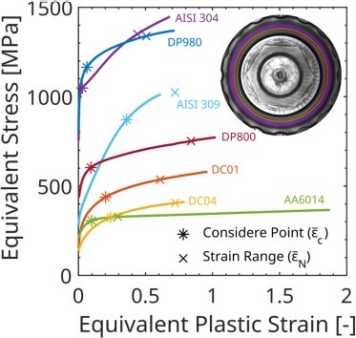New Paper on Whip-Bezier: A C1-continous hardening law for efficient direct and inverse identification
Our paper on "Whip-Bezier: A C1-continous hardening law for efficient direct and inverse indentification" was published in International Journal of Solids and Structure
Abstract

In 3D constitutive models, the hardening law is an essential model ingredient that has a first order effect on the predicted stress–strain response. In most phenomenological external pageplasticity models, the hardening law coincides with the stress–strain curve for monotonic uniaxial loading. When identifying the hardening law for large strains through hybrid experimental–numerical approaches, the numerical properties of the hardening law play an important role. Here, we propose a novel piecewise-defined hardening law based on a composition of external pagequadratic Bezier curve segments. The Whip-Bezier formulation preserves C1 continuity and achieves a external pageparametrization with less parameters than its piecewise-linear counterpart. Both the possibility of identifying the hardening parameters in a decoupled optimization (e.g. from in-plane torsion experiments) and the use of a fully-coupled identification scheme (e.g. from notched tension experiments) are detailed. When contrasted with widely-used analytical expressions, the Whip-Bezier model consistently demonstrates enhanced performance with increasing number of parameters. This improvement comes with minimal statistical variance and reduced dependence on the initial optimization guess. Furthermore, the fitting quality is at least equivalent to that of the Swift-Voce hardening law with the same number of parameters.
